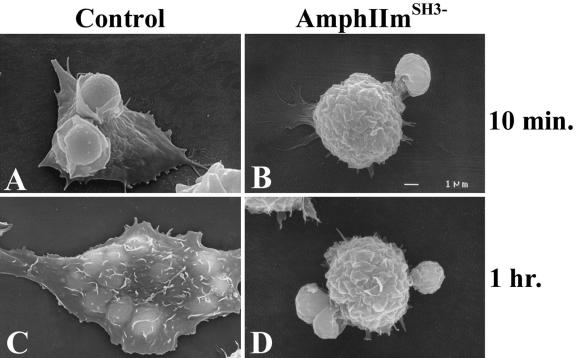FIG. 12.
Bin1−10−12−13 functions in phagocytosis in macrophages. RAW-TT10 (murine macrophage-derived) cells were transiently cotransfected with a construct that expresses GFP and with either an empty vector (Control) or a construct that expresses a dominant negative form of Bin1−10−12−13 lacking the C-terminal SH3 domain (AmphIImSH3−). The cells expressing the highest levels of GFP were recovered by flow cytometry and incubated with immunoglobulin G-coated sheep red blood cells for 10 min (panels A and B) or for 1 h (panels C and D) before visualization by scanning electron microscopy. The control cells formed actin pedestals beneath the bound sheep red blood cells, then formed membrane ruffles (A), and then phagocytosed the bound sheep red blood cells (C). In contrast, cells expressing the dominant negative mutant Bin1−10−12−13 lacking the C-terminal SH3 domain formed actin pedestals beneath the bound sheep red blood cells (B), but did not form membrane ruffles, and did not phagocytose the bound sheep red blood cells which remained on the cell surface (D). The scale bar in panel B applies to each panel. (Reprinted from reference 100 with permission from Elsevier.)

